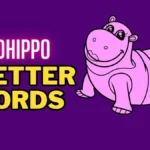Introduction:
The Web3 ecosystem represents a transformative shift in how the internet operates, emphasizing decentralization, blockchain technology, and user empowerment. Unlike traditional Web2 platforms, Web3 aims to return control to users by enabling decentralized applications (dApps) and services. This new paradigm is reshaping various industries, including art and culture, by creating novel opportunities for creators and consumers alike.
Art and culture have always been integral to human expression and societal development. In the context of the Web3 ecosystem, these elements are gaining new dimensions, as blockchain technology facilitates greater transparency, ownership, and collaboration. Artists and cultural institutions are now able to engage with their audiences in more meaningful and direct ways, breaking down barriers imposed by traditional systems.
Revolutionizing Art Ownership:
One of the most significant impacts of the Web3 ecosystem on art and culture is the transformation of art ownership. Traditional art markets often involve intermediaries, leading to high fees and limited access for both artists and buyers. Blockchain technology eliminates these intermediaries by enabling the creation and exchange of non-fungible tokens (NFTs). NFTs represent unique digital assets that can be bought, sold, and traded on decentralized platforms, giving artists full control over their work.
This newfound ownership model is democratizing the art world, allowing artists to reach a global audience without the need for galleries or auction houses. Additionally, NFTs provide verifiable proof of ownership and provenance, addressing long-standing issues of art forgery and theft. As a result, artists can monetize their creations more effectively, while collectors can invest in digital art with confidence.
Enhancing Cultural Preservation:
The Web3 ecosystem is also playing a crucial role in cultural preservation. Many cultural artifacts and artworks are at risk of being lost due to deterioration, theft, or lack of proper documentation. Blockchain technology offers a solution by enabling the digital preservation of these cultural assets. By creating immutable records on a decentralized ledger, important cultural heritage can be safeguarded for future generations.
Furthermore, digitizing cultural artifacts allows for greater accessibility and engagement. Museums and cultural institutions can create virtual exhibitions and interactive experiences, reaching a wider audience than ever before. This not only helps preserve cultural heritage but also fosters a deeper appreciation and understanding of diverse cultures. EAK Digital, for instance, supports projects that leverage blockchain technology to enhance cultural preservation and accessibility, ensuring that these invaluable assets are protected and celebrated.
Fostering Artistic Collaboration:
The decentralized nature of the Web3 ecosystem is fostering new forms of artistic collaboration. Artists from different parts of the world can now collaborate on projects without the need for physical proximity. Decentralized autonomous organizations (DAOs) enable artists to come together, pool resources, and make collective decisions about their work. This collaborative approach not only enhances creativity but also empowers artists by giving them a say in the direction of their projects.
Moreover, blockchain technology facilitates the sharing of revenue among collaborators through smart contracts. These self-executing contracts automatically distribute payments based on predefined terms, ensuring that all contributors are fairly compensated. This level of transparency and automation reduces conflicts and fosters a more cooperative creative environment. The role of link building in promoting these collaborative projects cannot be overlooked, as it helps connect artists with potential partners and audiences, further expanding their reach.
Empowering Artists and Creators:
The Web3 ecosystem is empowering artists and creators by providing new revenue streams and greater control over their work. Traditional art markets often limit the ways in which artists can monetize their creations. With the advent of blockchain technology, artists can explore various monetization models, such as selling limited edition NFTs, offering fractional ownership of their works, or creating subscription-based services for exclusive content.
These innovative models not only provide financial benefits but also allow artists to build stronger relationships with their audiences. By offering unique and personalized experiences, artists can create loyal fan bases and sustain their careers independently. This empowerment extends to all types of creators, including musicians, writers, and filmmakers, who can leverage the Web3 ecosystem to distribute their work directly to their fans.
Redefining the Art Market:
The integration of blockchain technology in the art market is redefining how art is bought, sold, and valued. Traditional art markets are often opaque, with prices and transactions hidden from public view. Blockchain technology introduces transparency by recording every transaction on a public ledger, making it easier to track the provenance and value of artworks. This transparency helps build trust among buyers and sellers, encouraging more participation in the market.
Additionally, the ability to tokenize physical artworks and sell them as NFTs is creating new investment opportunities. Investors can purchase shares of high-value artworks, diversifying their portfolios and gaining exposure to the art market without needing to buy entire pieces. This fractional ownership model democratizes art investment, making it accessible to a broader range of people.
Conclusion:
The Web3 ecosystem is revolutionizing the art and culture sectors by enhancing ownership, preservation, collaboration, and empowerment. Blockchain technology is providing artists and cultural institutions with the tools to engage with their audiences more directly and transparently. As the Web3 ecosystem continues to evolve, its impact on art and culture will undoubtedly grow, offering new possibilities for creativity and expression. This transformative shift is not only reshaping how art is created and consumed but also how it is valued and preserved for future generations.






